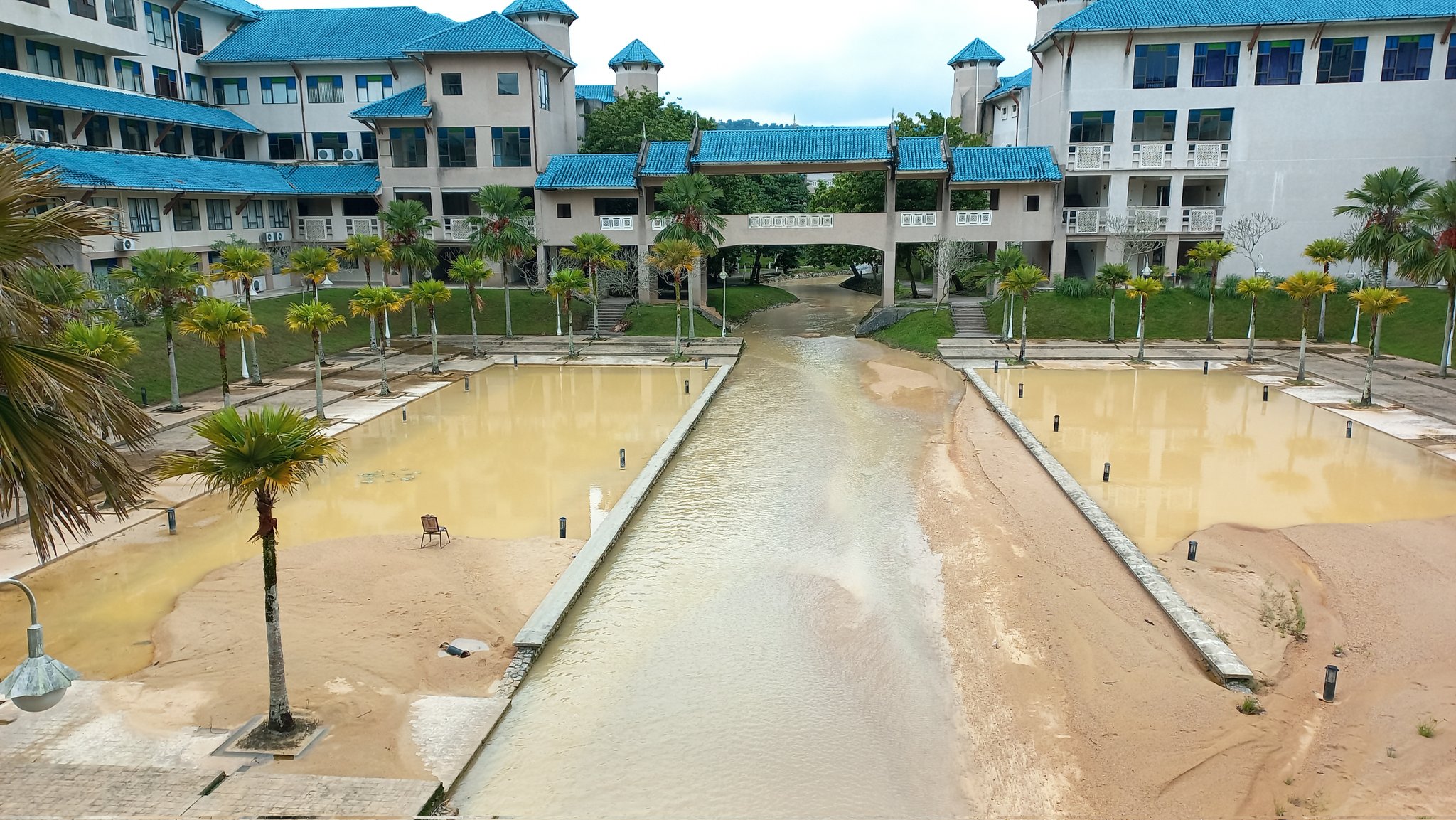By Athira ABD Latiff
GOMBAK, 8 October 2022: Uncertain weather from heavy rains to hot, humid climates has caused misfortunes across the nation, triggering the concerns of many, including tertiary students with the problems of flooding within campus grounds.
A Twitter post by an IIUM student (@heyyjarr) explicitly targeted IIUMs river condition, in which the river she described sarcastically likening the current conditions to a “beach”.
Uia gombak dah ada pantai lah geng. Siap ada tempat duduk khas untuk menikmati pemandangan pic.twitter.com/vnvq2TB1I0
— heyjar (@heyyjarr) October 5, 2022
The tweet has since sparked uproar among students, expressing similar concerns and remarks revolving around the condition of IIUMs river.
A Twitter user @nuaiyn_ recalled thoughts about the campus renowned inhabitants and said that alongside monitor lizards, crocodiles could be around too.
Meanwhile, another Twitter user @mariadyvessa expressed distress with the current river situation in IIUM Gombak compared to previous years.
œOh God, its so bad! Previously, the port to hang out would be there while waiting for classes or during lunch, the user recalled.
œMeetings at night would be so beautiful and comfortable. What happened now? she added while questioning the abrupt transformation.
Various users of Twitter, in response to the original Tweet posted by the user @heyyjarr reported similar concerns regarding IIUMs river condition in hopes that improvements will be made in the future.
The original Tweet user also stressed that despite her tweeting “this in a lighthearted manner, the actual issue at hand is not light in the slightest sense.
In response to this, IIUM Student Union (IIUMSU) President, Aliff Naif, shared in an interview with IIUMToday that there has been ongoing discussion regarding the condition of the river with the IIUM Rector.
Aliff stressed that the current condition of the river is caused by external factors of development projects outside of campus grounds.
The accumulation of sand seen within IIUM’s river bed from nearby development projects is because of the lack of sediment points made by such developments, Aliff noted.

He underlined that sediment points are crucial in preventing mishaps so sediments such as sand will go to a particular sediment point of a particular development instead of flowing into IIUM’s river.
“Rather than our river being polluted by trash, it is polluted by the sediment of sand from development projects,” he mentioned.
Stressing on the aims of improving IIUM’s river, Aliff highlighted that the IIUMSU has designed initiatives that call for community engagement, advocacy, and responsibility.
“IIUMSU are involved with the suburban community of Gombak, NGOs such as Friends of Sungai Klang, as well as the IIUM flagship program: The River of Life, to combat the current issue of the river,” he added.
Hence, an effort to revive the IIUM river back to its notable figure begins with the effort from the university’s community despite having to carry the burden of the consequences from external factors.***
